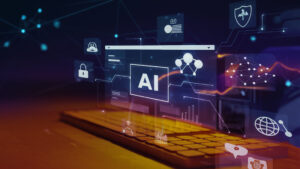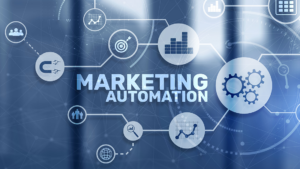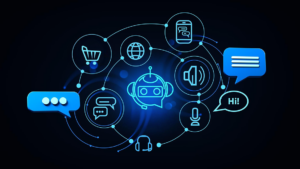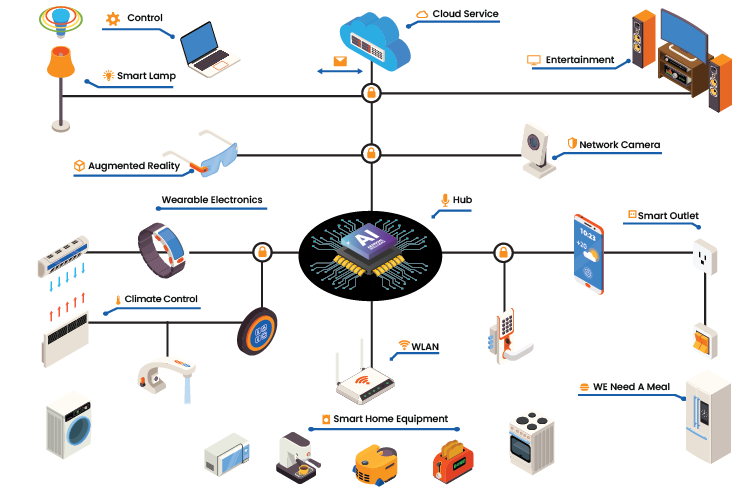
ACL Digital
The Impact of AI and Machine Learning on Connected Consumer Electronics
In recent years, the proliferation of connected consumer electronics has been nothing short of remarkable. From smartphones and smart speakers to smart home devices, these technologies have become integral to our daily lives. Central to this revolution are the advancements in artificial intelligence (AI) and machine learning (ML), which are not just reshaping how devices function but also enhancing how they interact with users.
The impact of AI and ML on connected consumer electronics is profound and transformative, reshaping how these devices are used, their capabilities, and the overall user experience.
AI and ML are not just enhancing the functionality of connected consumer electronics; they are revolutionizing the relationship between users and their devices, leading to smarter, more proactive, and user-centric products. This evolution promises to continue, bringing even more sophisticated technologies into the consumer electronics market.
Rise of Smart Devices: The Expansion of Connected Consumer Electronics
The growing trend of connected consumer electronics, represents a significant shift in how electronic devices are integrated into our daily lives. This trend is characterized by the increasing number of devices that are networked together and connected to the internet, allowing them to communicate with each other and with centralized services to offer enhanced and personalized functionalities.
Here are the key aspects of this ever growing trend:
Interconnectivity
At the heart of the trend is the ability of devices to connect and communicate over the internet. Devices such as smartphones, smartwatches, home assistants, appliances, and even cars can now share data seamlessly. This interconnectivity enables a level of synchronization across devices that greatly enhances user convenience and efficiency.
Smart Homes
One of the most visible impacts of this trend is the evolution of the smart home. Devices such as thermostats, lighting systems, security cameras, and kitchen appliances can be controlled remotely through mobile apps or voice commands. This not only increases comfort and convenience but also improves home security and energy efficiency.
Health and Wellness Monitoring
Wearable technologies have become increasingly popular, offering features such as step counting, heart rate monitoring, and sleep tracking. More advanced devices now offer detailed health monitoring and can even synchronize with medical databases, providing valuable data to healthcare providers and alerting users to potential health issues.
Automation and Artificial Intelligence
With advancements in AI, connected devices can automate more tasks. For example, a smart refrigerator can track expiration dates, suggest recipes based on available ingredients, and even order groceries when supplies are low. Similarly, AI-enabled personal assistants can learn user preferences over time to streamline tasks and information management.
Enhanced Entertainment
Connected consumer electronics are transforming entertainment by personalizing the user experience. Smart TVs and streaming devices suggest content based on previous viewing habits, and smart speakers can adjust music playlists to the tastes of individuals within the household.
Energy Management
Connected devices contribute to more efficient energy use. Smart meters and energy management systems help monitor and optimize household electricity usage, contributing to lower energy bills and reduced environmental impact.
Data-Driven Insights
The data collected by these devices provide invaluable insights into user behavior, preferences, and trends. This data is not only useful for users to understand their own habits but also for manufacturers to improve product design and functionality.
Challenges and Concerns
Despite the benefits, the trend also raises concerns about privacy, data security, and the digital divide. As more devices connect to the internet, the risk of hacking and data breaches increases. Additionally, there is a growing need to address issues related to the accessibility and affordability of these technologies.
The trend towards connected consumer electronics is reshaping lifestyles and industries by making everyday objects smarter and more responsive to user needs. This trend is poised to continue growing as technology advances, potentially leading to even more profound changes in how we live and interact with our environment.
Importance of AI and ML in Improving the Capabilities of Connected Consumer Electronics
Artificial Intelligence (AI) and Machine Learning (ML) play pivotal roles in enhancing the capabilities of connected consumer electronics, transforming how these devices operate and interact with users. Here are some of the key areas where AI and ML significantly impact:
Personalization
AI and ML enable devices to learn from user interactions and behaviors, adapting their functions to better meet individual preferences. For example, smart TVs and music streaming services use AI to recommend content based on past viewing or listening habits, improving user satisfaction.
Improved User Interfaces
AI technologies such as natural language processing and computer vision allow for more intuitive interaction methods with devices. Voice-controlled assistants like Alexa and Siri, or gesture-controlled systems, rely on AI to interpret and respond to user commands accurately.
Enhanced Performance
AI and ML can optimize the operation of devices. For example, smart thermostats learn the most efficient heating and cooling cycles based on historical data, weather conditions, and user preferences, which can reduce energy consumption.
Predictive Maintenance
In connected appliances like refrigerators and washing machines, AI can predict failures before they occur by analyzing usage patterns and operational data. This helps in preemptively addressing maintenance issues, thereby extending the lifespan of the device and avoiding inconvenient breakdowns.
Security Enhancements
AI is instrumental in improving the security of connected devices. Machine learning models can detect unusual patterns that may signify a security breach, such as unexpected remote access. This is crucial in an era where the Internet of Things (IoT) devices are increasingly targeted by cyberattacks.
Seamless Connectivity and Automation
AI helps in managing multiple devices within the IoT ecosystem, ensuring they work together seamlessly. This automation extends across devices, from smartphones and wearables to home security systems and appliances, providing a cohesive and user-friendly experience.
Resource Optimization
AI and ML help in the efficient utilization of resources within devices, optimizing processing power and memory usage based on real-time demands. This not only enhances performance but also helps in reducing energy consumption.
AI and ML are integral in pushing the boundaries of what connected consumer electronics can do, offering smarter, more efficient, and personalized user experiences. As these technologies continue to evolve, their integration into consumer electronics will likely deepen, further enhancing device capabilities and interaction paradigms.
AI-Powered Features in Consumer Electronics
AI-powered features in consumer electronics are rapidly transforming how users interact with their devices, making them smarter, more efficient, and tailored to individual needs. Here’s a detailed look at some of the key AI-powered features that are increasingly becoming standard in consumer electronics:
Voice Assistants
One of the most recognizable AI features is the integration of voice assistants like Amazon Alexa, Google Assistant, and Apple Siri. These systems use natural language processing (NLP) and machine learning to understand and respond to voice commands. They allow users to control devices hands-free, search for information, schedule reminders, and even control smart home devices.
Image and Facial Recognition
Smartphones, security cameras, and even some home appliances now incorporate image and facial recognition technologies. These features rely on computer vision, a branch of AI that trains computers to interpret and understand the visual world. For example, smartphones use facial recognition for secure authentication, and smart home cameras use image recognition to identify familiar faces or alert homeowners about suspicious activities.
Recommendation Systems
Whether it’s smart TVs, music streaming services, or even smart refrigerators, AI-driven recommendation systems analyze your habits and preferences to suggest relevant content or products. For example, streaming services use AI to suggest shows and movies you might like based on your viewing history.
Predictive Text and Smart Typing
AI enhances typing experiences on smartphones and tablets through predictive text features, which suggest the next word you might type and correct spelling errors. These systems learn from your typing habits to improve accuracy and speed, making digital communication faster and more efficient.
Health Monitoring
Wearable devices like smartwatches and fitness trackers use AI to monitor health and fitness metrics such as heart rate, sleep patterns, and physical activity. These devices can provide personalized insights and recommendations, alert users about potential health issues, and even track recovery progress.
Robotic Cleaners
AI powers robotic vacuum cleaners and mops, enabling them to navigate around your home efficiently, avoid obstacles, and remember the most effective cleaning routes. These devices use sensors and AI algorithms to map out spaces and improve over time, ensuring better coverage and cleaning results.
Energy Efficiency
Many modern appliances, including air conditioners and washing machines, now feature AI-driven modes that optimize their operation for energy efficiency. These systems can adjust settings in real-time based on usage patterns and environmental conditions to minimize energy consumption while maximizing performance.
These AI-powered features not only improve the functionality and user experience of consumer electronics but also pave the way for further innovations that could redefine daily life in an increasingly connected world. Explore ACL digital’s latest range of AI-enhanced consumer electronics and discover how cutting-edge AI and ML applications can transform your home and lifestyle. Visit our website today to learn more and take the first step into a smarter future.
Related Insights

Matter Protocol: Powering the Smart Infrastructure of Future Cities

Beyond the Black Box: The Role of Explainable AI (XAI) in Enabling Ethical and Responsible AI Adoption

Why AI-Powered Marketing Is Key to Business Growth

How multimodal interactions enhance the experience of commerce

The Game-Changing Potential of 5G in Consumer Devices




